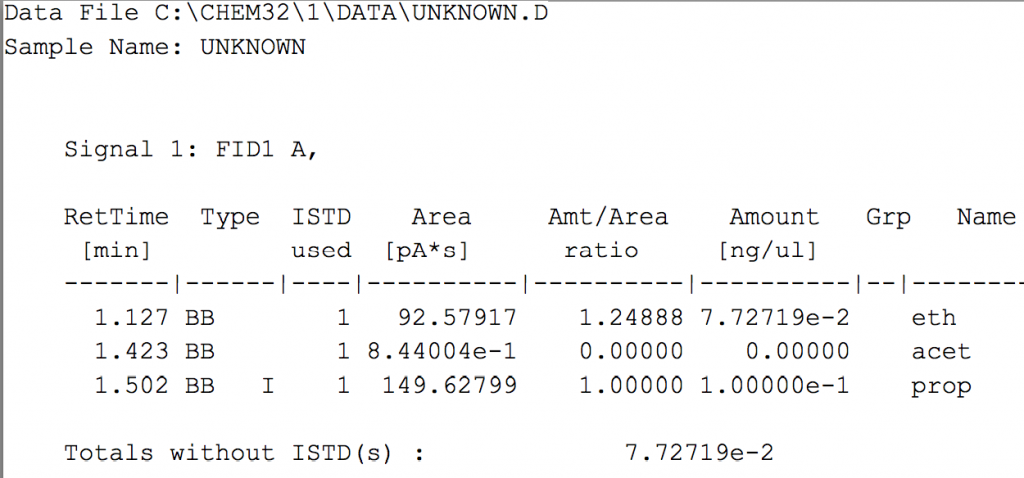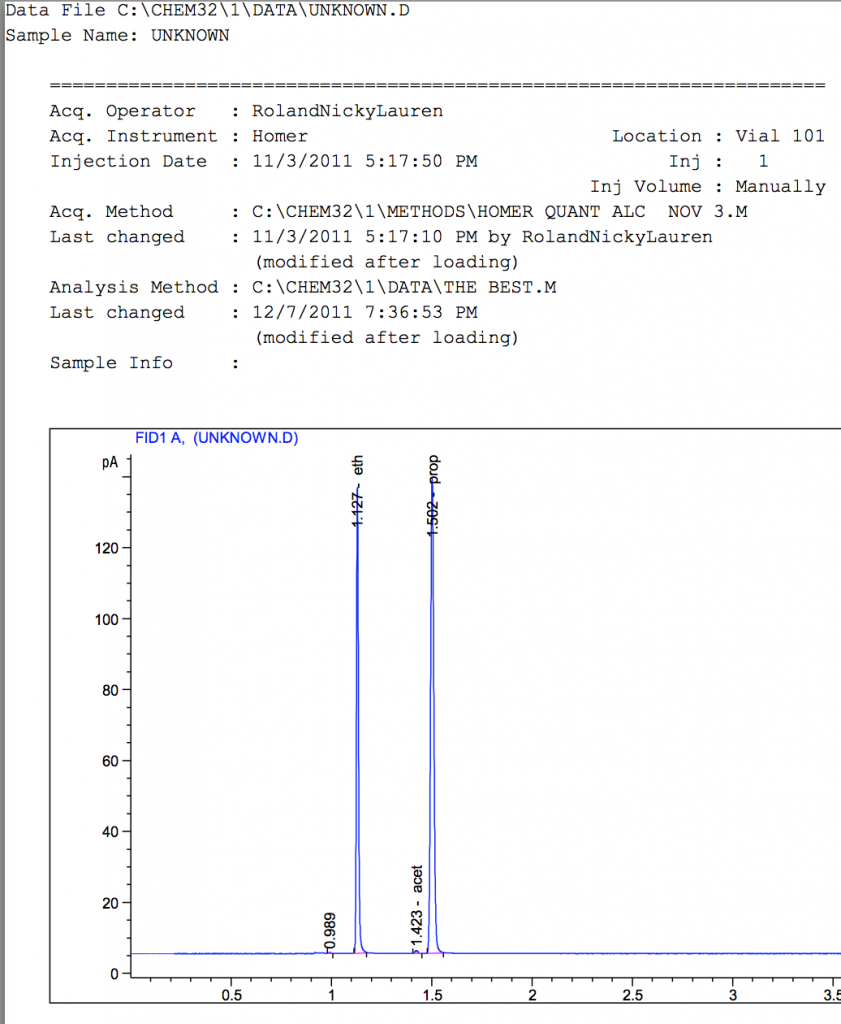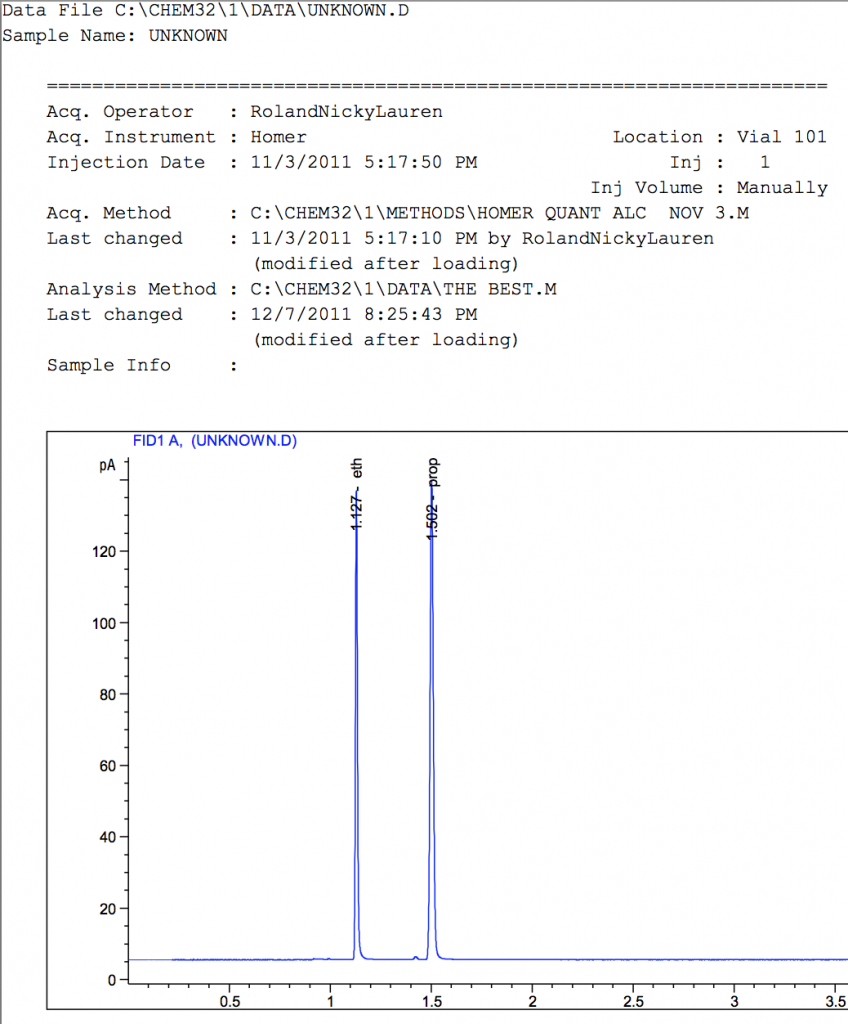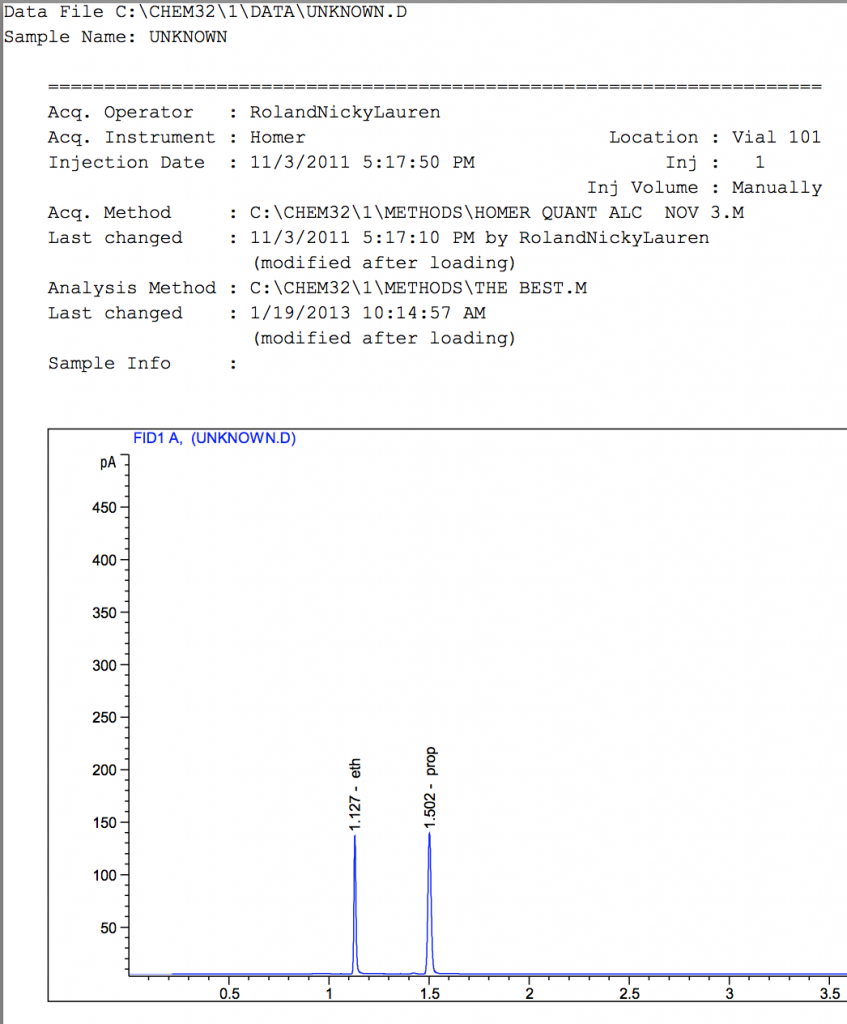In chromatography, you see what they want you to see: Get the Electronic Data Files
By: Justin J. McShane, JD, F-AIC and Josh D. Lee, JD

What evil lies in the heart of man? The Shadow knows…
What evil may lie in the heart of chromatographers? The Electronic Data Files (EDF) know…
In courtrooms all across the US, a flat out lie is told. State experts testify that when it comes to GC-FID chromatograms, the results can never be manipulated. If pressed, they confess that it can be manipulated. But they quickly retort that if the data has been manipulated, they can always tell simply by looking at the printed chromatograms. This too is a lie.
The simple truth is that you can totally manipulate the GC-FID results and the viewer of the chromatograms will be none the wiser. In short, it is impossible to tell if the data has been manipulated without reviewing the electronic data file.
We have blogged here before and proven that the Graphic User Interface of GC-FID software can manipulate the data and the viewer of the the printed chromatogram will be none the wiser: The case for raw data: “Integration” in Gas Chromatography: How to make an innocent person guilty in a DUI case by manipulating the software
With this post we want to really show what can be done and show that it cannot be discovered.
But first some background and orientation.
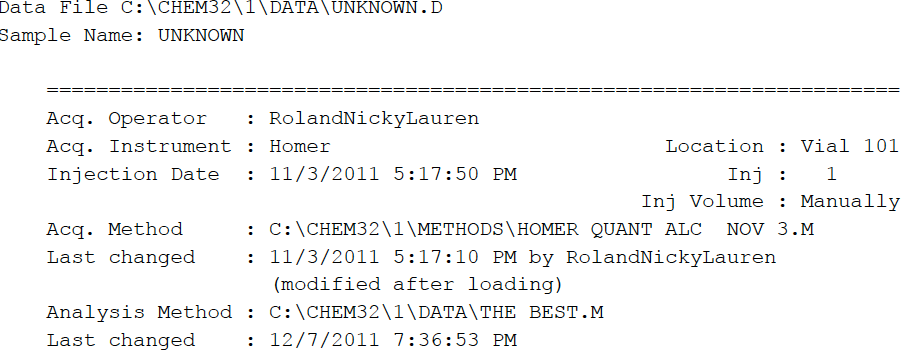
The above is going to be printed out on the first page on the top of the chromatogram for Agilent machines.(All of these principles hold true for Shimatzu, and PerkinElmer and other machines. We just used Agilent as an example.)
The data file (.D extension) is the binary code file that is recorded at the time of the analysis in real time. This .D file is for all intents and purposes locked and is not easily altered. The file path for where we can find this locked .D file is also there. In this case, it is C:\CHEM32\1\DATA\UNKNOWN.D.
We can tell that this data file is the source of the chromatogram that is printed.
The true result of this unknown, when it is not manipulated is 0.077. It is this particular chromatogram that clearly shows the sample is a 0.077 BAC. (It is written in scientific notation: 7.72719e-2. Remember when you learned this stuff in junior high they taught you to move the decimal 2 places to the left when there is a -2. So 7.72719e-2 becomes .0772719 or for our purposes we shorten it to .077.
The chromatogram looks like this in its original unaltered form:
We can use the software (e.g., TotalChrom, TurboChrom, ChemStation) to produce the following results all from the very same data (C:\CHEM32\1\DATA\UNKNOWN.D):
.188 Reported Result with no way of noticing anything was altered
.16 With Cleaner Chromatogram: What a corrupt lab analyst could do here is hide peaks that are not supposed to be in there so as to not have to answer for them under oath at trial by a knowledgable defense attorney. These peaks that were present in the chromatogram above have all but disappeared in this one with some fancy altering. This is easy to do and nearly impossible to catch.
Bottom Line: We were able to take the exact same test result and make the reported result go from below the legal limit in many states to well above the limit by merely using the software’s built in tools. Notice the Data File Paths never changed, these are all from the same original unknown analysis with a reported result of a 0.077.
There is no way simply by looking at the printed chromatogram that anyone can see the manipulation.
We need to be getting the Electronic Data Files if we want to be sure that the chromatograms are truly reflective of the analysis of the sample.

